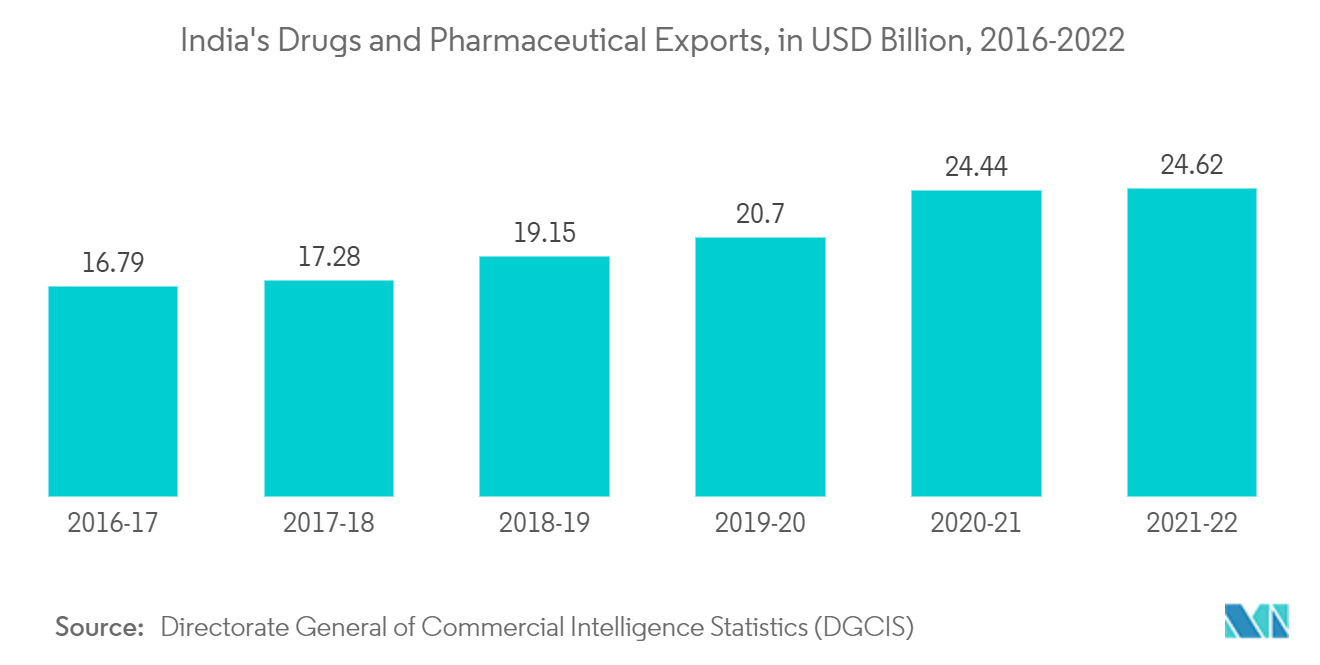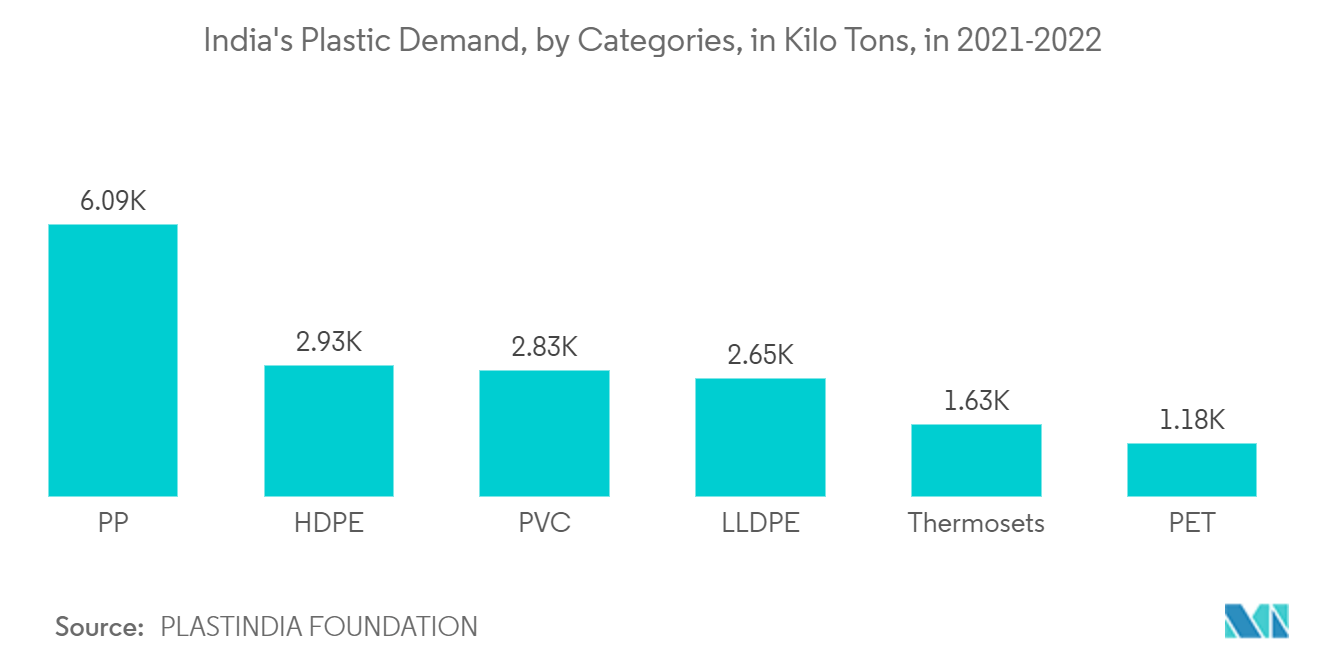Market Trends of India Pharmaceutical Packaging Industry
This section covers the major market trends shaping the India Pharmaceutical Packaging Market according to our research experts:
Indian Pharmaceutical Exports is Expected to Hold Significant Market
India's pharmaceutical packaging sector is rapidly climbing the growth ladder, and many growth drivers are gaining momenta, such as creating many small and large manufacturing and processing industries. In addition, most pharmaceutical companies export their products to overseas markets, so they adopt high-level packaging standards.
- India is the 12th largest exporter of medical goods in the world. Indian drugs are exported to more than 200 countries worldwide, with the US being the key market. Generic drugs account for 20% of the global export volume, making the country the largest provider of generic medicines globally. Indian drug & pharmaceutical exports stood at USD 24.60 billion in FY22, USD 24.44 billion in FY21, and USD 2,119.08 million in June 2022.
- The country provides one of the lowest manufacturing costs in the world and is more economical than the USA and almost half of Europe. It is the world's largest supplier of generic medicines (20% to 22%of global export volume). It fueled the research and development of efficient packing solutions for the pharmaceutical sector that substantially prevents contamination and provide drug safety and convenience of delivery and handling.
- Moreover, India imports 70% of its APIs from China. To safeguard the country, on March 3rd, 2020, India restricted the export of 26 active pharmaceutical ingredients (API) and medicines due to the impact of coronavirus COVID-19 in China, which accounts for 10% of all exports from the country. It caused panic in European countries as 26% of the European formulations are controlled by Indian APIs.
- The Indian government lifted the restriction on the export of hydroxychloroquine (HCQ), an anti-malarial drug considered suitable for COVID-19 treatment, and paracetamol. It again increased the demand for a better pharmaceutical secondary and tertiary packaging market in India.
- In emerging markets, India and China are quickly catching up with the US, Western Europe, and Japan markets as pharmaceuticals are exported in large quantities to developed countries from India. It became essential to comply with the packaging standards of developed countries in emerging markets. As emerging markets offer cost-effective, standardized packaging solutions, many offshore companies are outsourcing their business to countries such as India and China for cost-effective solutions.

Plastic Packaging Will Experience Significant Growth
- Plastic packaging is a multi-layer plastic laminate sheet containing PE, PP, PET, and PVC. Products used primarily in plastic products in the pharmaceutical packaging industry in India are composed of polyethylene.
- Plastic bottles used for pharma packaging are composed of a variety of plastic, such as polyvinyl chloride, polyethylene, polypropylene, and polystyrene. It is a clear, strong, lightweight plastic used for storing and selling packaged products across the industry, such as drinking water, carbonated soft drinks, soda, etc. They are mostly used as primary and secondary packaging materials.
- Pharmaceutical companies rely more on packaging and labeling as media to promote and protect their products in the increasing counterfeit market and meet the new safety regulations. Plastic packaging gained popularity due to its properties such as barrier against moisture, high dimensional stability, high impact strength, resistance to strain, low water absorption, transparency, heat and flame resistance, etc.
- Polyvinyl chloride and PVDC (polyvinylidene chloride) are mostly used in pharmaceuticals as primary packaging materials that protect pharmaceutical products against oxygen and odor, moisture, water vapor transmission, contamination, and bacteria. It makes both PVC and PVDC the material of choice for blister packaging.
- PVC is the third most widely produced synthetic plastic polymer used across the globe as it includes excellent organoleptic properties, which means it does not affect the taste of packaged food or medicine. PVC mono films protect against contamination by helping to prevent the spread of germs during manufacture, distribution, and display and are sunlight and UV rays resistant.
- Blister packaging is used for various preformed plastic packaging in small consumer goods, food, and pharmaceuticals. The main component of a blister pack is a cavity in a moldable web, usually a thermoformed plastic. Drug packaging is a technology used to improve treatment compliance and patient safety. Sustainable plastic packaging in the pharmaceutical industry includes excellent potential for future development in the country.

